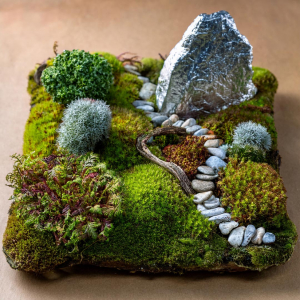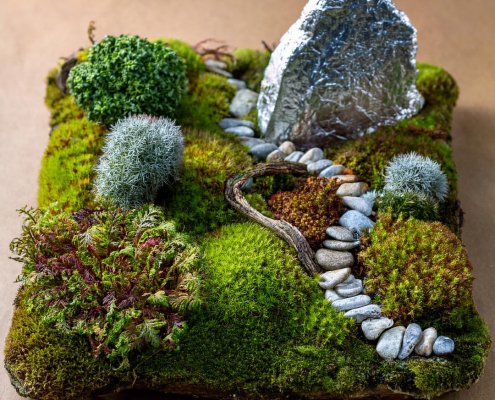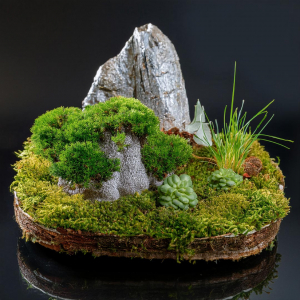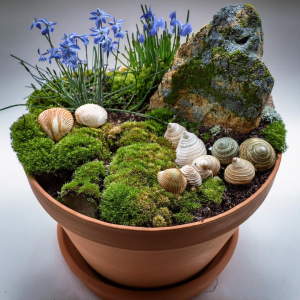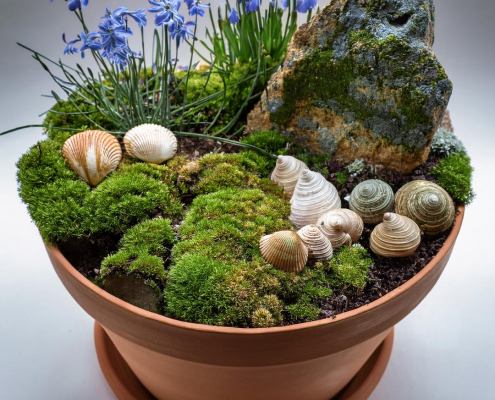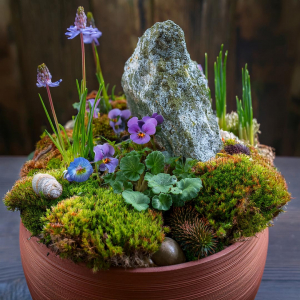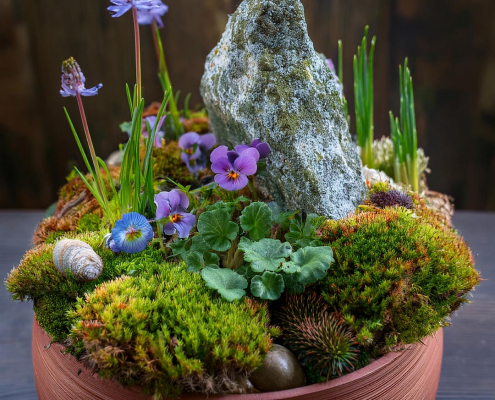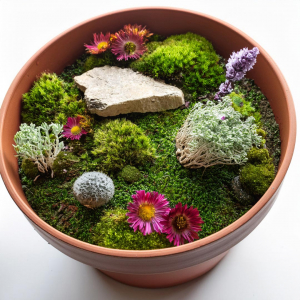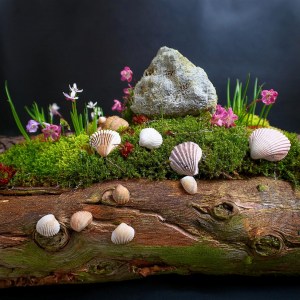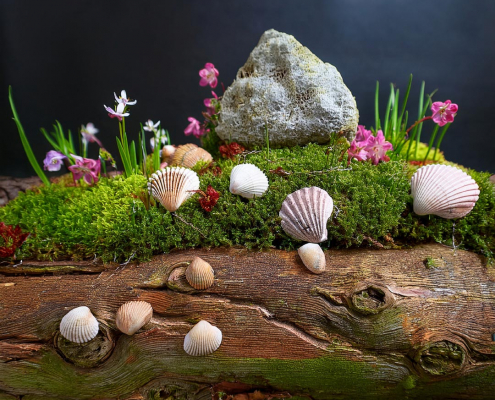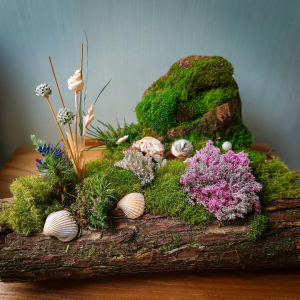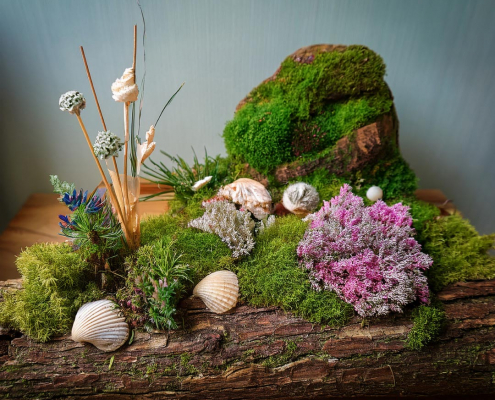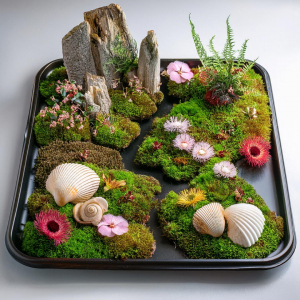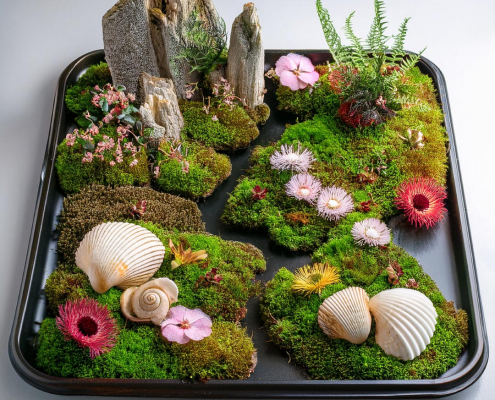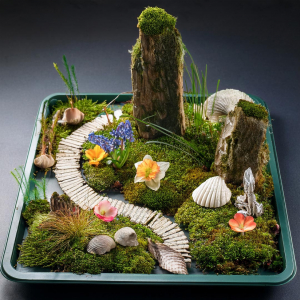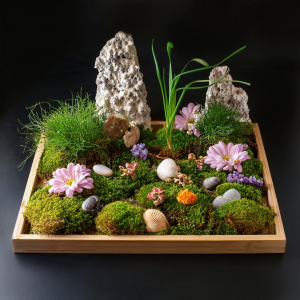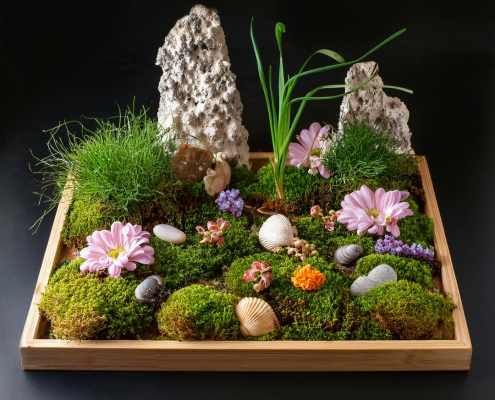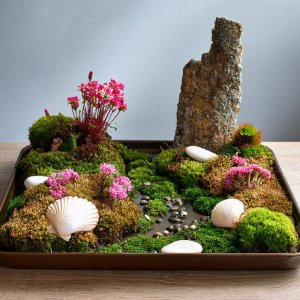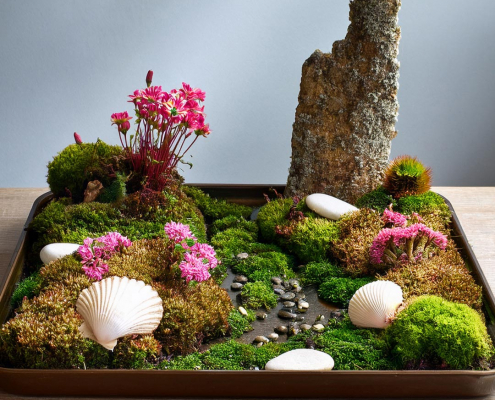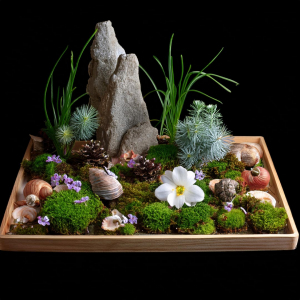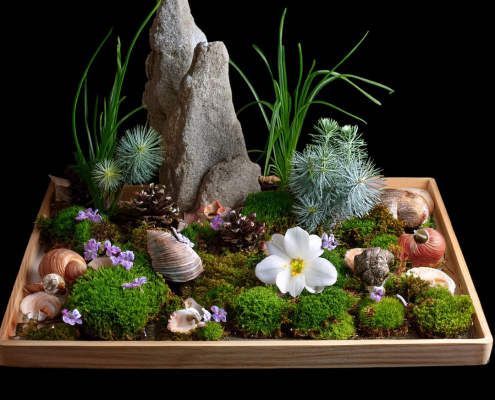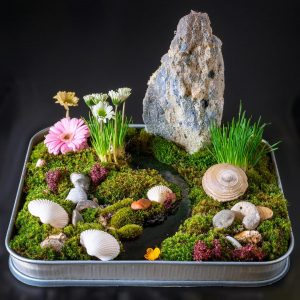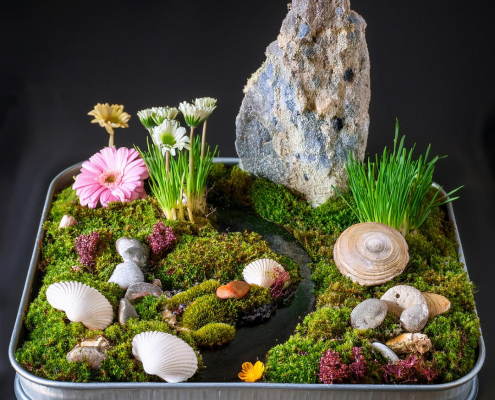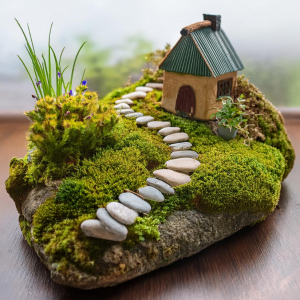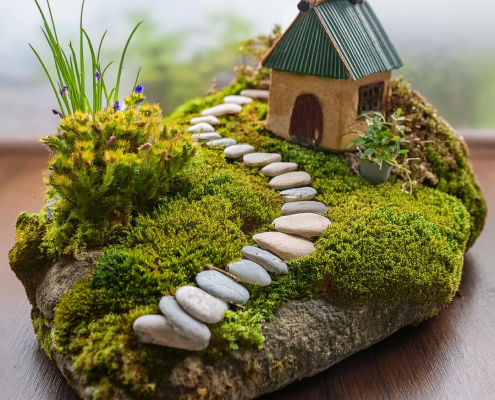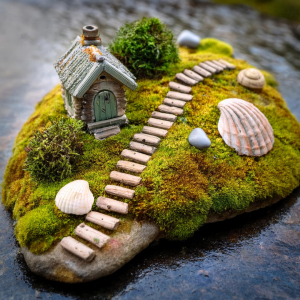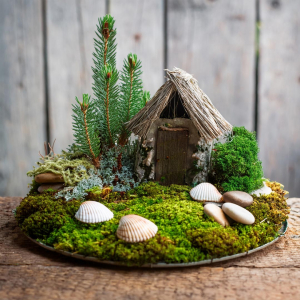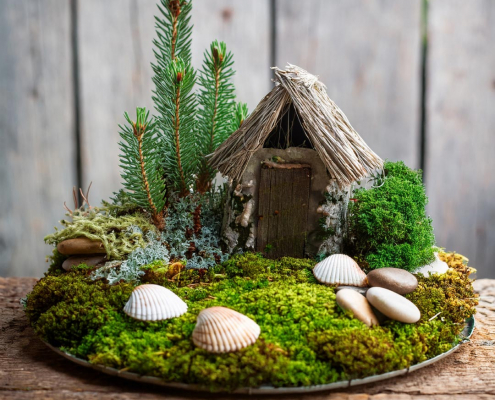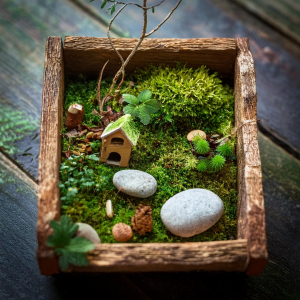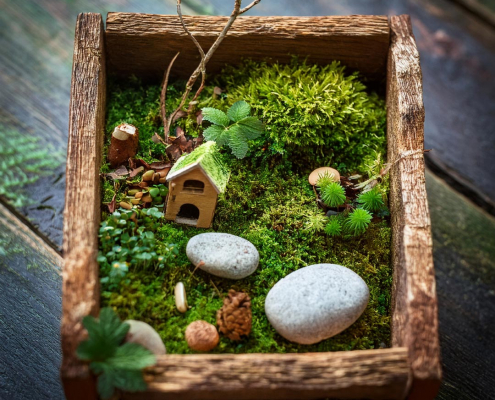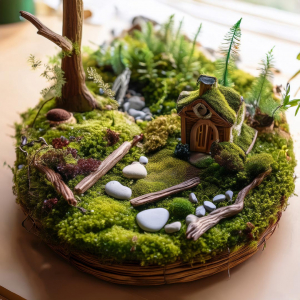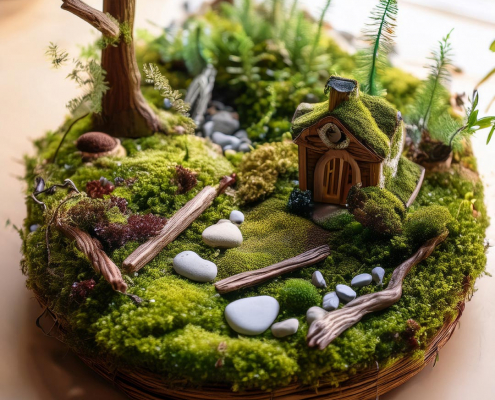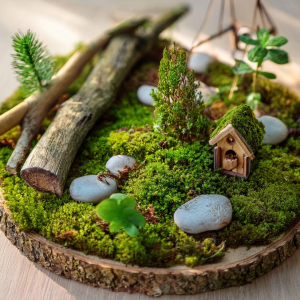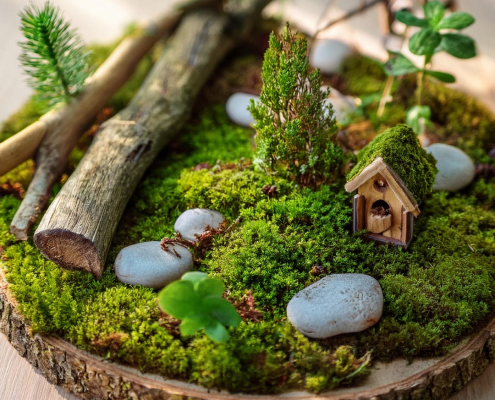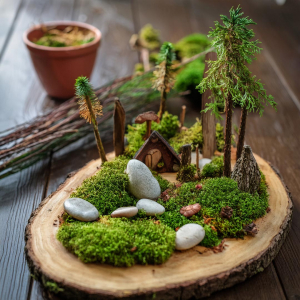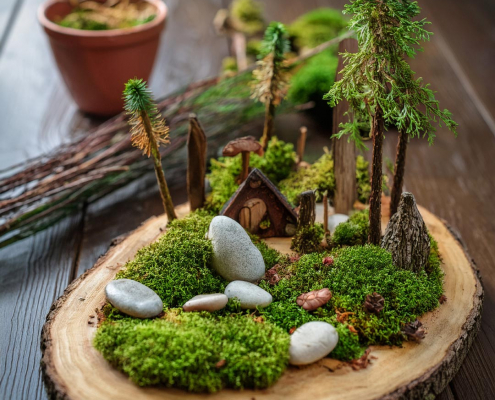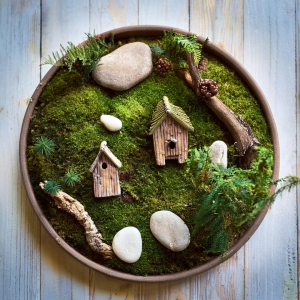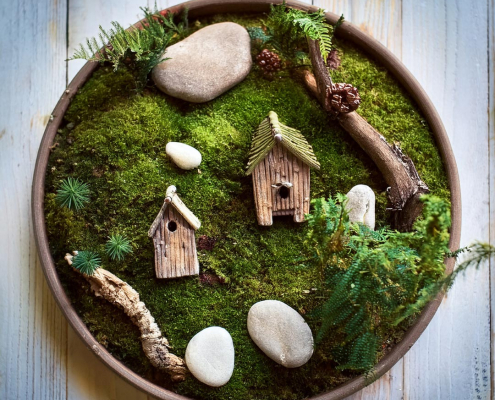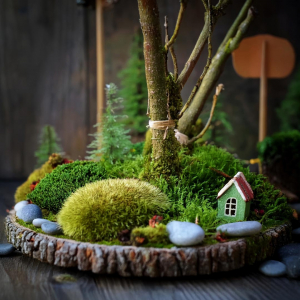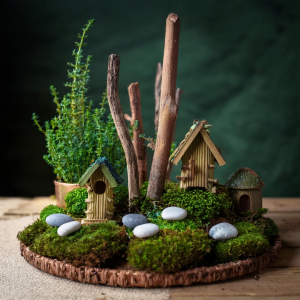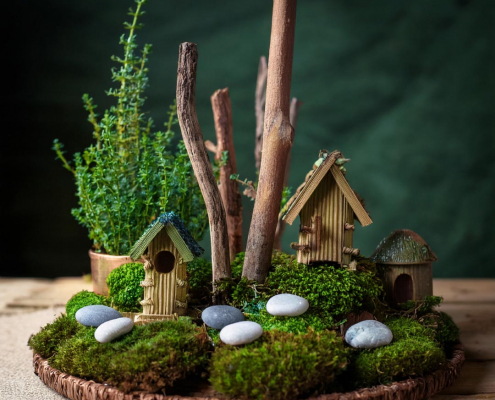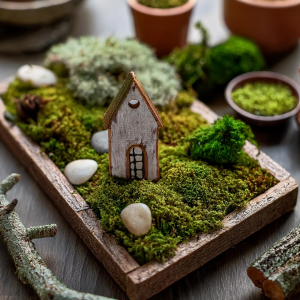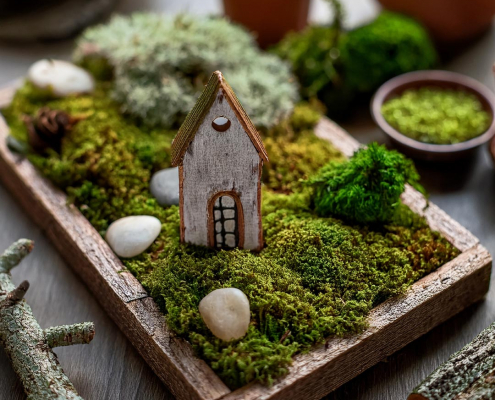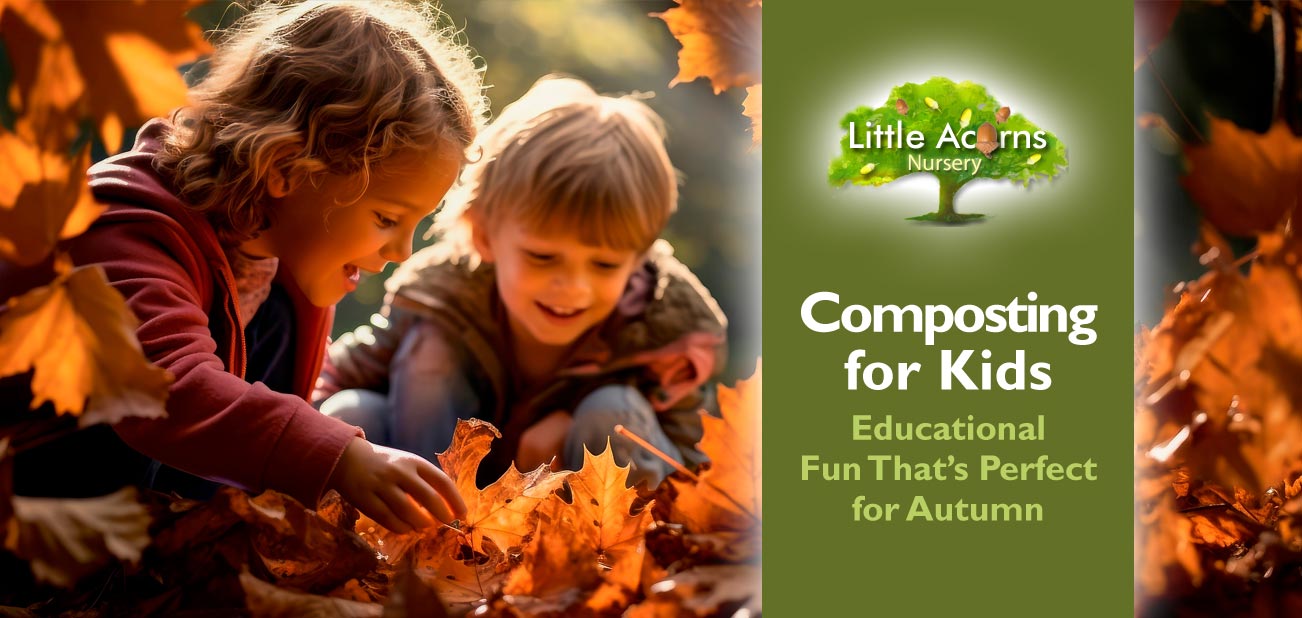
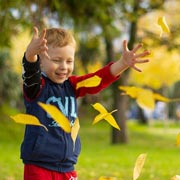 As the bright days of summer give way to crisp autumn air, parks, gardens, and pavements begin to fill with a carpet of crunchy leaves. For children and under-fives, autumn is one of the most exciting times of the year. With the landscape so full of textures, sounds, and colours, it’s the perfect time to get outdoors, explore, and learn about the natural world. It’s also the ideal time for them to begin a simple but deeply rewarding project: composting. In today’s post, we outline how children can approach this wonderful activity and explain its significant benefits.
As the bright days of summer give way to crisp autumn air, parks, gardens, and pavements begin to fill with a carpet of crunchy leaves. For children and under-fives, autumn is one of the most exciting times of the year. With the landscape so full of textures, sounds, and colours, it’s the perfect time to get outdoors, explore, and learn about the natural world. It’s also the ideal time for them to begin a simple but deeply rewarding project: composting. In today’s post, we outline how children can approach this wonderful activity and explain its significant benefits.
Composting for Kids
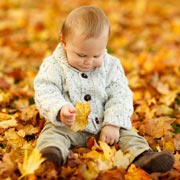 Composting is a wonderfully simple, hands-on activity that provides children of all ages with an opportunity to enjoy the outdoors and connect with nature. It will introduce big ideas about recycling and responsibility in a child-friendly way, teach patience, and make good use of all those autumn leaves. Best of all, it’s fun, messy in all the right ways, and will lead to fascinating discoveries — from the changing smells of the compost heap to the tiny minibeasts that wriggle in to help the process along. Composting is also an activity that can be done with just a little guidance from grown-ups.
Composting is a wonderfully simple, hands-on activity that provides children of all ages with an opportunity to enjoy the outdoors and connect with nature. It will introduce big ideas about recycling and responsibility in a child-friendly way, teach patience, and make good use of all those autumn leaves. Best of all, it’s fun, messy in all the right ways, and will lead to fascinating discoveries — from the changing smells of the compost heap to the tiny minibeasts that wriggle in to help the process along. Composting is also an activity that can be done with just a little guidance from grown-ups.
Why Composting is a Brilliant Activity for Little Learners
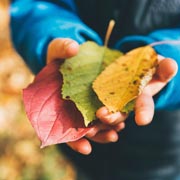 Spending time outdoors gathering materials will not only help children understand where natural resources come from, but it will also give them valuable time in the fresh air, where they can move, play, and make discoveries. At this age, such experiences are vital for confidence and development. And because composting is a gentle, ongoing project, children can revisit it over weeks and months, and watch as nature slowly transforms what they collected into something new and incredibly useful.
Spending time outdoors gathering materials will not only help children understand where natural resources come from, but it will also give them valuable time in the fresh air, where they can move, play, and make discoveries. At this age, such experiences are vital for confidence and development. And because composting is a gentle, ongoing project, children can revisit it over weeks and months, and watch as nature slowly transforms what they collected into something new and incredibly useful.
Composting may at first look like a simple pile of garden scraps, but for young children it’s a treasure chest of learning opportunities. Through the activity, they’ll begin to see the cycle of life in action — how fallen leaves, apple cores, and even cardboard tubes can change and return to the soil. This sparks curiosity about science and the environment in a way that feels playful and natural.
Beyond the fun of collecting leaves and layering waste materials into the compost heap, composting offers a wealth of developmental benefits:
 It encourages children to care for the environment and understand recycling in its most natural form.
It encourages children to care for the environment and understand recycling in its most natural form.- It helps them practise patience too, as they wait for their compost heap to transform. They learn to return regularly, check progress, and wait for the outcome — a valuable lesson for young minds.
- It provides endless sensory play — the changing colours, the rustle of leaves, the smell of damp earth, and perhaps the feel of wriggling worms!
- It gives them a sense of responsibility as they check on their compost and add new materials.
- Spending time outdoors, especially in contact with nature, offers a myriad of benefits to children, including reducing stress, regulating mood, giving little ones a sense of achievement, and a confidence boost. Close proximity to nature has also been shown to improve academic grades! Follow the bold green link to learn more.
 Composting shows children how cycles work in nature — how things grow, fall, break down, and then help new life grow again. This is an early introduction to science and sustainability in action.
Composting shows children how cycles work in nature — how things grow, fall, break down, and then help new life grow again. This is an early introduction to science and sustainability in action.- It builds vocabulary and boosts communication as children discuss what they’re adding, like “crunchy leaves,” and “soft apple peelings,” and describe smells, textures, and colours as the compost heap changes.
- Collecting leaves, scooping soil, and turning the compost all involve gross and fine motor skills. For under-fives, these small but regular actions strengthen coordination, mobility skills, and confidence.
- It’s also a surprisingly fun and satisfying activity for children — get your little one(s) to give it a try this autumn.
How to Get Composting
The good news is you don’t need a large garden or fancy equipment to begin. Composting can be scaled to whatever space you have available. A simple corner of the garden, a small patio or balcony, or even a large tub or bin can be turned into a child-friendly compost space.
Step-by-step Composting with Little Ones
Composting could be introduced as a fun “nature experiment.” Here’s how you could explain and explore the process with a young child:
Step 1: Collecting Treasures
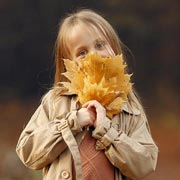 Head outdoors with a small bucket or bag and invite your child to gather leaves, twigs, and other natural “treasures.” Encourage them to notice the crunch, colour, and shapes of the leaves. Kitchen scraps can also be sourced from indoors, for example, apple cores, banana skins, and vegetable peelings from mealtimes.
Head outdoors with a small bucket or bag and invite your child to gather leaves, twigs, and other natural “treasures.” Encourage them to notice the crunch, colour, and shapes of the leaves. Kitchen scraps can also be sourced from indoors, for example, apple cores, banana skins, and vegetable peelings from mealtimes.
Avoid cooked food, meat, dairy, and oily scraps. These don’t break down well and could potentially attract pests.
Step 2: Layering
 Show them how to tip the scraps into your compost heap, bin, or tub. Explain that the pile needs a mix of “green” (like fruit and vegetable peelings and grass cuttings) and “brown” (like dry leaves and cardboard) to work properly. Young children will enjoy the action of sprinkling, layering, and patting it all down. It’s a great moment to remind them that all living things eventually return to the earth — and through composting, they can see that process step by step.
Show them how to tip the scraps into your compost heap, bin, or tub. Explain that the pile needs a mix of “green” (like fruit and vegetable peelings and grass cuttings) and “brown” (like dry leaves and cardboard) to work properly. Young children will enjoy the action of sprinkling, layering, and patting it all down. It’s a great moment to remind them that all living things eventually return to the earth — and through composting, they can see that process step by step.
Step 3: Adding Water & Air
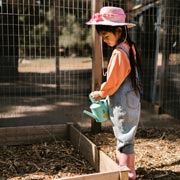 Sometimes compost can dry out. You might therefore encourage your child to sprinkle a little water with a small watering can. Every few weeks, show them how to “stir” the compost gently, for example, with a small trowel or child’s spade — this lets in air and helps it break down.
Sometimes compost can dry out. You might therefore encourage your child to sprinkle a little water with a small watering can. Every few weeks, show them how to “stir” the compost gently, for example, with a small trowel or child’s spade — this lets in air and helps it break down.
Step 4: Observing Over Time
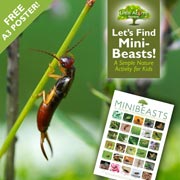 Encourage your child to check the compost regularly. Ask what they can see, smell, and feel. Over time, the compost heap will shrink and darken in colour. Your child may begin to spot minibeasts like worms, beetles, woodlice, and centipedes — all busy at work breaking down the compost pile. This is a brilliant moment to draw your child’s attention to our free Minibeast Nature Hunt activity and poster, so they can learn more about the helpful creatures they’ve found.
Encourage your child to check the compost regularly. Ask what they can see, smell, and feel. Over time, the compost heap will shrink and darken in colour. Your child may begin to spot minibeasts like worms, beetles, woodlice, and centipedes — all busy at work breaking down the compost pile. This is a brilliant moment to draw your child’s attention to our free Minibeast Nature Hunt activity and poster, so they can learn more about the helpful creatures they’ve found.
The Finished Product
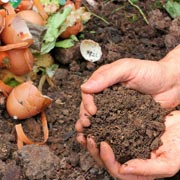 After a few months, the compost turns into a dark, crumbly, earthy material. This is the finished product, which is perfect for feeding plants. Involving your child in scooping and spreading it onto flowerbeds or into plant pots helps them see the complete cycle: from scraps to soil, and then back into growing things again. This is a lovely moment of achievement — through their endeavours, they have produced something valuable that will feed plants in the year ahead. It’s the perfect way to show children the cycle of seasons and how nature gives back when we take care of it.
After a few months, the compost turns into a dark, crumbly, earthy material. This is the finished product, which is perfect for feeding plants. Involving your child in scooping and spreading it onto flowerbeds or into plant pots helps them see the complete cycle: from scraps to soil, and then back into growing things again. This is a lovely moment of achievement — through their endeavours, they have produced something valuable that will feed plants in the year ahead. It’s the perfect way to show children the cycle of seasons and how nature gives back when we take care of it.
The Long-term Value of Composting
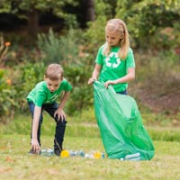 By introducing composting at a young age, you’ll plant more than just seeds in the soil — you’ll plant ideas in your child’s mind. They’ll learn that waste can have value, that patience is rewarded, and that nature is full of tiny helpers working behind the scenes.
By introducing composting at a young age, you’ll plant more than just seeds in the soil — you’ll plant ideas in your child’s mind. They’ll learn that waste can have value, that patience is rewarded, and that nature is full of tiny helpers working behind the scenes.
Such early experiences often form the foundation of a lifelong respect for the environment. More importantly, they’re fun, shared moments that children will remember — running through leaf piles, spotting their first worm, or proudly spreading their very own compost in the garden.
A Hugely Worthwhile Activity for Under-Fives
Autumn composting is a simple yet powerful activity for children under five. It combines outdoor play, sensory exploration, and gentle science, while teaching responsibility and care for the world around them. With a little guidance from parents and carers, children can enjoy months of discovery and end up with something genuinely useful for the garden.
So, as the leaves begin to fall this year, gather up a bucket, step outside, and let your little one’s hands (and imagination) get busy. Composting is nature’s recycling — and for young children, it’s nothing short of magical.
Your Childcare Nursery in Clayton-le-Woods, Chorley
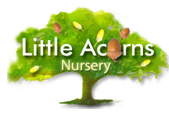
 Today’s activity suggestion comes courtesy of Little Acorns Nursery in Clayton-le-Woods, Chorley. The award-winning Lancashire setting provides a high-quality weekday childcare service for children under five. It supports childcare funding schemes for eligible families, operates virtually all year round from 7:30 a.m. to 6:00 p.m., and has Good Provider status from Ofsted.
Today’s activity suggestion comes courtesy of Little Acorns Nursery in Clayton-le-Woods, Chorley. The award-winning Lancashire setting provides a high-quality weekday childcare service for children under five. It supports childcare funding schemes for eligible families, operates virtually all year round from 7:30 a.m. to 6:00 p.m., and has Good Provider status from Ofsted.
Get in touch today to explore the possibility of sending your baby, toddler, or preschooler to Little Acorns Nursery — we’d love to show you around, answer any questions, and enrol your child for a nursery place:
Little Acorns Nursery offers a convenient choice for families in and around Clayton-le-Woods, Clayton Brook, Clayton Green, Chorley, Thorpe Green, Pippin Street, Buckshaw Village, Whittle-le-Woods, Farington, Bamber Bridge, Lostock Hall, Euxton, Leyland, and Penwortham.
Safety Notes for Parents & Carers
While composting is safe and fun, there are a few simple guidelines to make sure it stays child-friendly:
• Always supervise under-fives and young children when foraging outdoors and adding or exploring the compost.
• Provide child-sized gloves if they’re handling the compost heap directly.
• Avoid letting children handle compost with sharp sticks or heavy tools. A small trowel or spoon is ideal.
• Teach children to wash their hands thoroughly afterwards.
• Make sure any container used has drainage holes to avoid soggy, smelly compost.
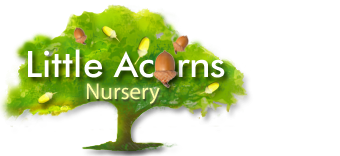
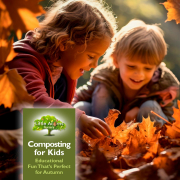
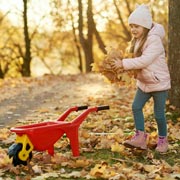 It encourages children to care for the environment and understand recycling in its most natural form.
It encourages children to care for the environment and understand recycling in its most natural form.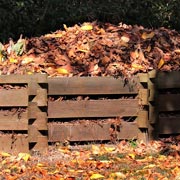 Composting shows children how cycles work in nature — how things grow, fall, break down, and then help new life grow again. This is an early introduction to science and sustainability in action.
Composting shows children how cycles work in nature — how things grow, fall, break down, and then help new life grow again. This is an early introduction to science and sustainability in action.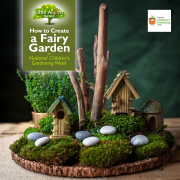
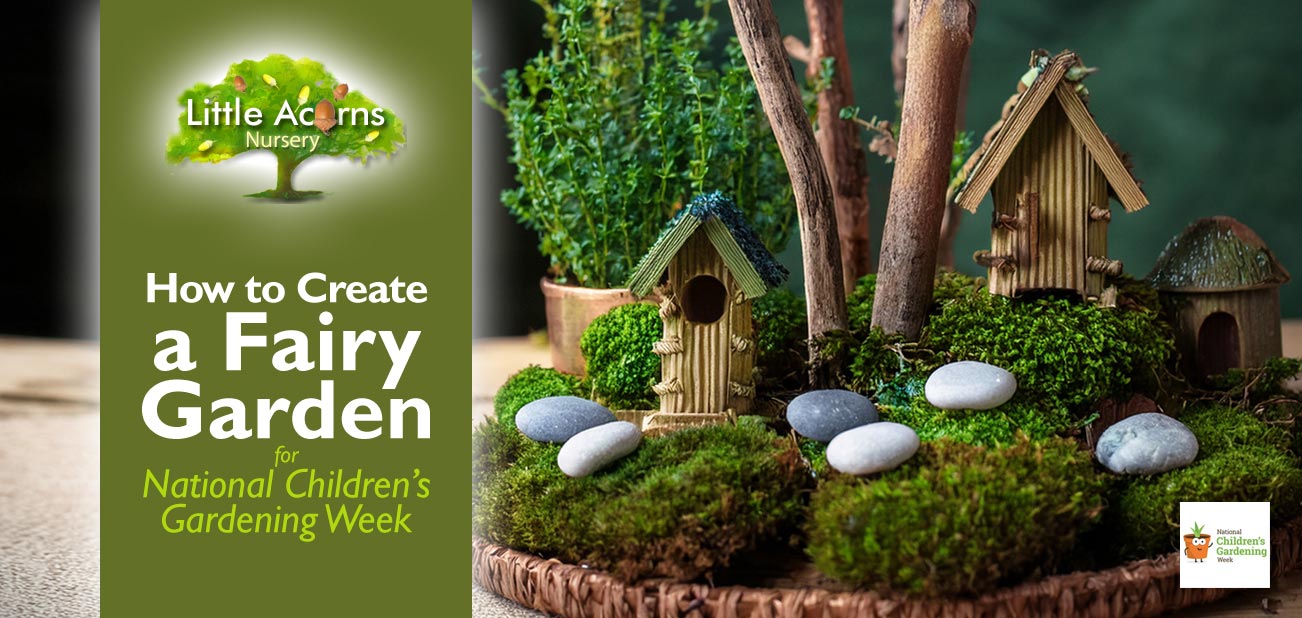
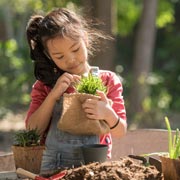 National Children’s Gardening Week arrives in late May and is the perfect time for young children to get involved in gardening activities. In celebration of the event, we describe a wonderful gardening-related activity that’s small-scale, easy, fun, and educational — perfect for little ones! The finished result is also rather magical and, once complete, lends itself to imaginative play. Today, we outline how children can make their own miniature fairy gardens. These are a great way to introduce little ones to creative gardening at a child-friendly scale. Under parent supervision* and largely using scavenged materials from outdoors, under-fives can let their imaginations run free and get creative! What’s more, the results are simply enchanting and will bring magic and a whole lot of delight to young children!
National Children’s Gardening Week arrives in late May and is the perfect time for young children to get involved in gardening activities. In celebration of the event, we describe a wonderful gardening-related activity that’s small-scale, easy, fun, and educational — perfect for little ones! The finished result is also rather magical and, once complete, lends itself to imaginative play. Today, we outline how children can make their own miniature fairy gardens. These are a great way to introduce little ones to creative gardening at a child-friendly scale. Under parent supervision* and largely using scavenged materials from outdoors, under-fives can let their imaginations run free and get creative! What’s more, the results are simply enchanting and will bring magic and a whole lot of delight to young children! National Children’s Gardening Week begins on the 24th of May this year (2025) and runs until the 1st of June. The timing is no coincidence as it’s generally a warm week and therefore perfect for gardening and growing plants and flowers. What’s more, it also spans the half-term school holiday that most schools recognise in the last week of May.
National Children’s Gardening Week begins on the 24th of May this year (2025) and runs until the 1st of June. The timing is no coincidence as it’s generally a warm week and therefore perfect for gardening and growing plants and flowers. What’s more, it also spans the half-term school holiday that most schools recognise in the last week of May.